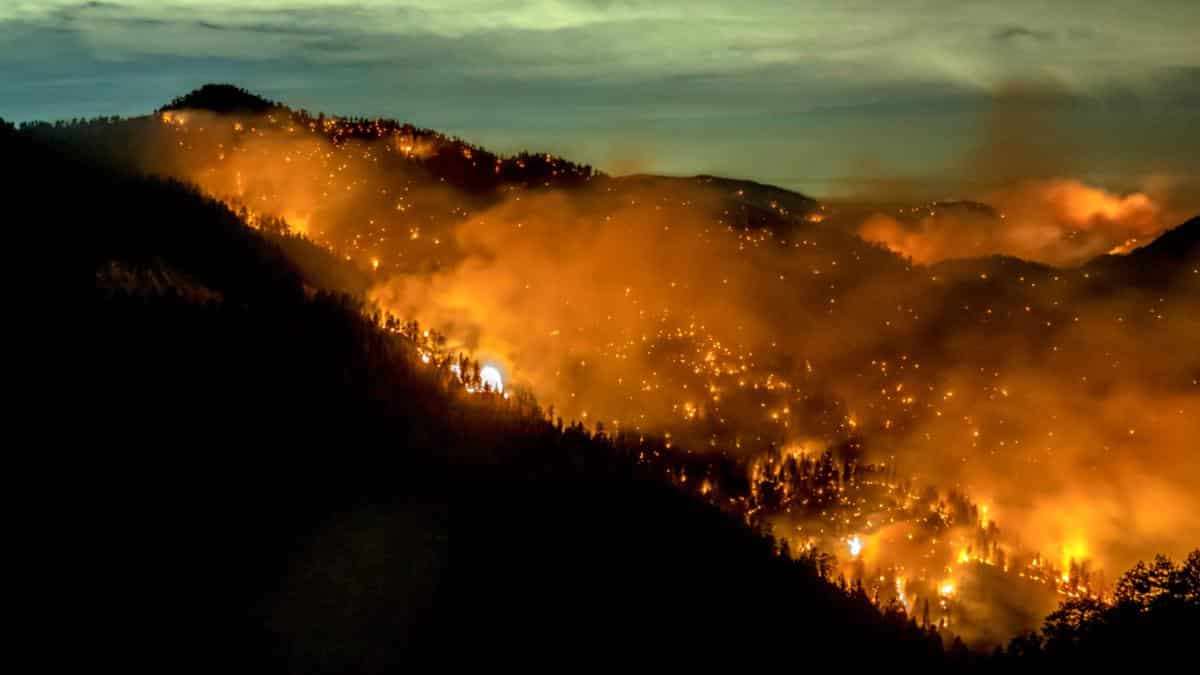

The Bobcat Fire is seen burning the Angeles National Forest in Los Angeles County, California, on September 17, 2020. Kyle Grillot / AFP / Getty Images
Fire weather is coming early to California this year.
For the first time since 2014, parts of Northern California are seeing a May “red flag” fire warning due to dry and windy conditions.
“It’s crazy, May and a red-flag warning,” Craig Clements, San Jose State University Wildfire Interdisciplinary Research Center director, told The Mercury News.
Critical fire weather conditions will continue through Tuesday afternoon due to gusty north winds and dry conditions. Please practice fire safety! pic.twitter.com/MvoHTRcsLP
— NWS Sacramento (@NWSSacramento) May 3, 2021
The warning coverage area extends from Redding in the north to Modesto in the south, and includes portions of the Central Valley and the state capital of Sacramento. The warning also extends to the eastern edges of the Bay Area, The Mercury News reported. The warning, first announced Sunday, is expected to last through 5 p.m. PT Tuesday afternoon.
“Any fires that develop will likely spread rapidly,” National Weather Service (NWS) Sacramento cautioned. “Outdoor burning is not recommended.”
Temperatures on Monday and Tuesday are also predicted to be 15 degrees above average in the Bay Area and Northern California, SFGate reported.
In fact, the area has already experienced some blazes. A wildfire broke out in Big Basin Redwoods State Park on Sunday around noon. Firefighters were able to contain it to 6.7 acres by Sunday night. Small fires also ignited in the Bay Area’s Solano County and Pittsburg, The Mercury News reported.
Fire season in California usually starts in summer and extends through the fall, according to The Guardian. However, the climate crisis has upended weather patterns in the state, which is now suffering from drought conditions. Much of California, including the north, is experiencing its driest wet season in more than 40 years; Sacramento experienced its driest on record in April, NWS said.
This April was the driest April on record for Sacramento with no rain falling. This brought warm days with us seeing our first 90s of the year and it was the 3rd warmest April on record. Despite the warm days things cooled off nicely at night. #CAwx pic.twitter.com/niAZh0Eupv
— NWS Sacramento (@NWSSacramento) May 2, 2021
The dry conditions exacerbate fires for two reasons, according to The Mercury News. There is no water to put out early flames, and dry weather speeds up the process of curing. Curing occurs when vegetation dries out to the point where its moisture content is impacted by the dryness of the atmosphere, not the soil.
“In a better scenario, we wouldn’t be dealing with this until the traditional fire season in the fall,” NWS Meteorologist Gerry Diaz told The Mercury News.
All of this follows 2020’s devastating fire season, when a record 4.1 million acres burned in California alone. It is too soon to speculate whether 2021’s season will be as bad or worse, even though it’s off to an earlier start, according to SFGate. State fire-fighting agency Cal Fire has so far responded to more than 1,354 wildfires since Jan. 1, 2021, with 2,219 total acres burned. By this time last year, Cal Fire had responded to 814 blazes burning 1,056 acres.
“The dry conditions and the very poor fuel moisture recovery over the last six or eight months and the lack of rain we’ve had and also the continued drought have put us in a position where our fuel moistures are very dry and we’re experiencing conditions that we would normally experience later in the summer in June and July and it’s only the beginning of May,” Cal Fire Spokesperson Cecile Juliette told SFGate.
While this week’s warning focused on the north, Southern California has not been spared early fire conditions. A blaze near San Diego has so far burned 5,100 acres and forced about 500 people to evacuate, according to The Guardian. It is now 55 percent contained, according to Cal Fire.

 233k
233k  41k
41k  Subscribe
Subscribe 